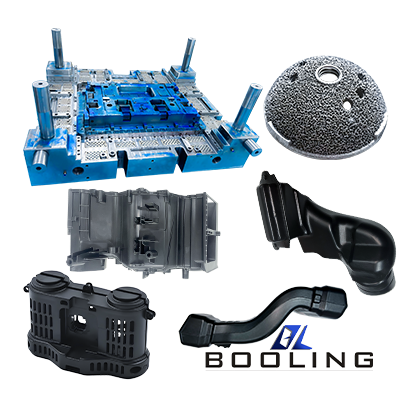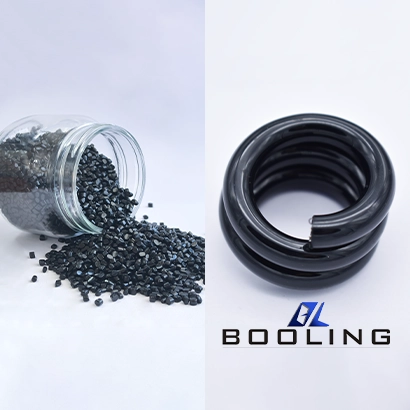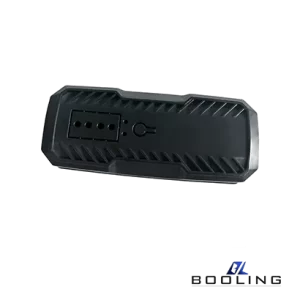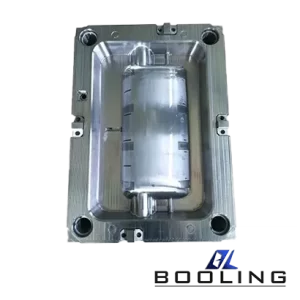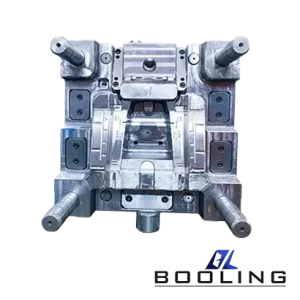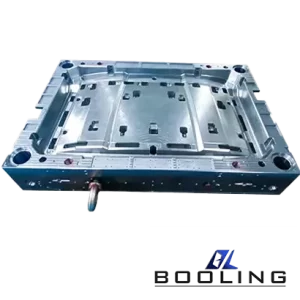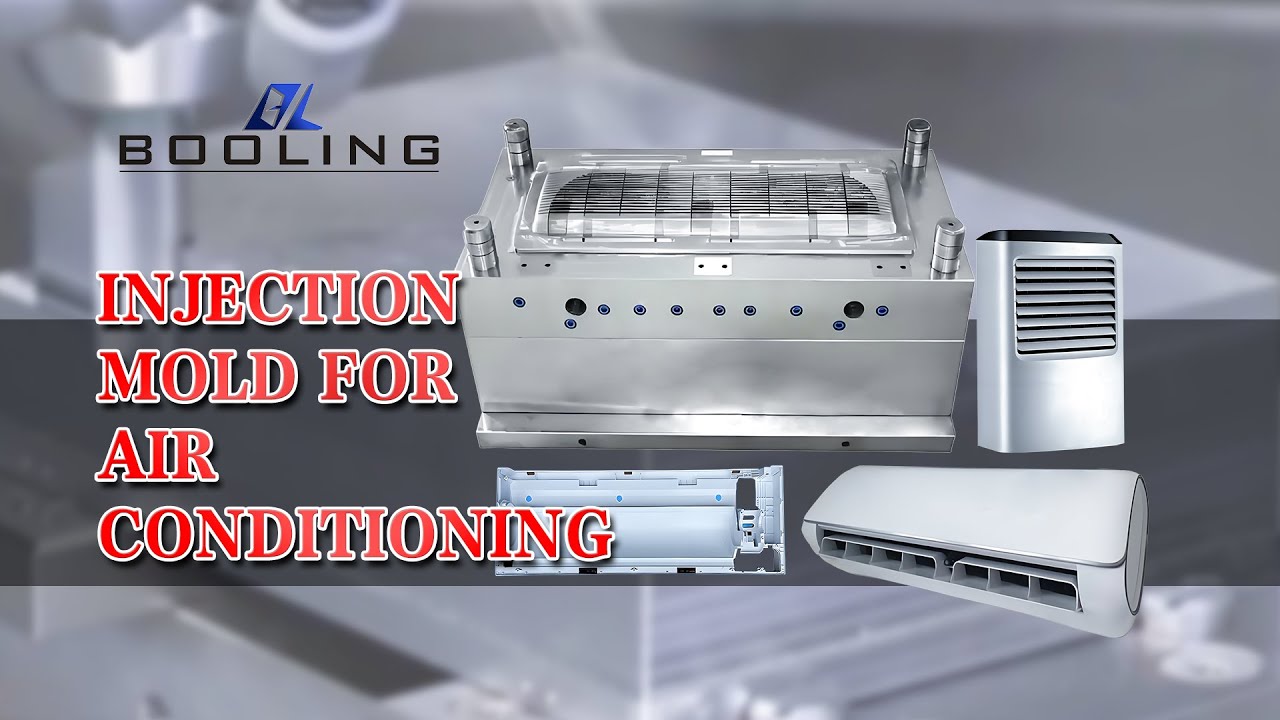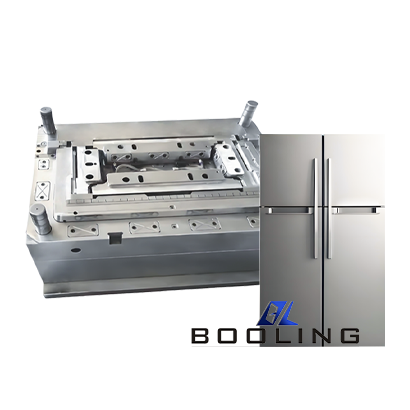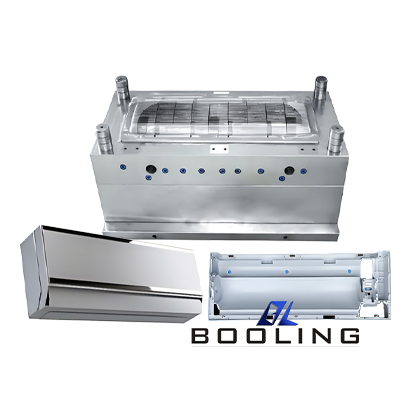Home > BOOLING’s Manufacturing Process for Air Conditioning Molds
Details
Details:
Model
Material
Brand
Origin
Application
Booling-Injection Mold-1
P20, 718, S136, 2738 etc
Booling
China
Home Appliance parts
BOOLING’s process for manufacturing air conditioning molds primarily utilizes 3D modeling technology, injection molding processes, CNC machining, and other techniques. Through mirror polishing of the metal molds, we achieve high precision and quality in the production of air conditioning housings.
Related Hot Products
Before producing the metal mold for an air conditioning housing, we typically request specific requirements from the client regarding the product, including its function, appearance, dimensions, and the material for the metal mold. The manufacturing of air conditioning housings relies mainly on plastic injection molding, because plastic offers advantages such as light weight, good strength, insulation, ease of molding, and low cost. Therefore, our entire manufacturing process is mainly divided into mold manufacturing, injection molding production, and post-processing and assembly.
BOOLING's Core Technology - Metal Molds for Air Conditioning Housings
The manufacturing of the metal mold is one of the most critical steps in the entire product production process. To ensure the precision of the air conditioning housing and its suitability for mass production, we must control errors at the micron level, guaranteeing the final shape, dimensions, and surface quality of the housing.
After receiving the client’s requirements, our engineers use 3D modeling to completely construct the data for the air conditioning housing mold within software, confirming the feasibility of the entire mold structure. Finally, we use CAE software to simulate the injection molding process, predicting plastic melt flow, weld line locations, shrinkage, and warpage. This allows us to optimize the design before cutting the mold, ensuring that the snaps between the air duct and the panel fit together perfectly and preventing multiple subsequent modifications.
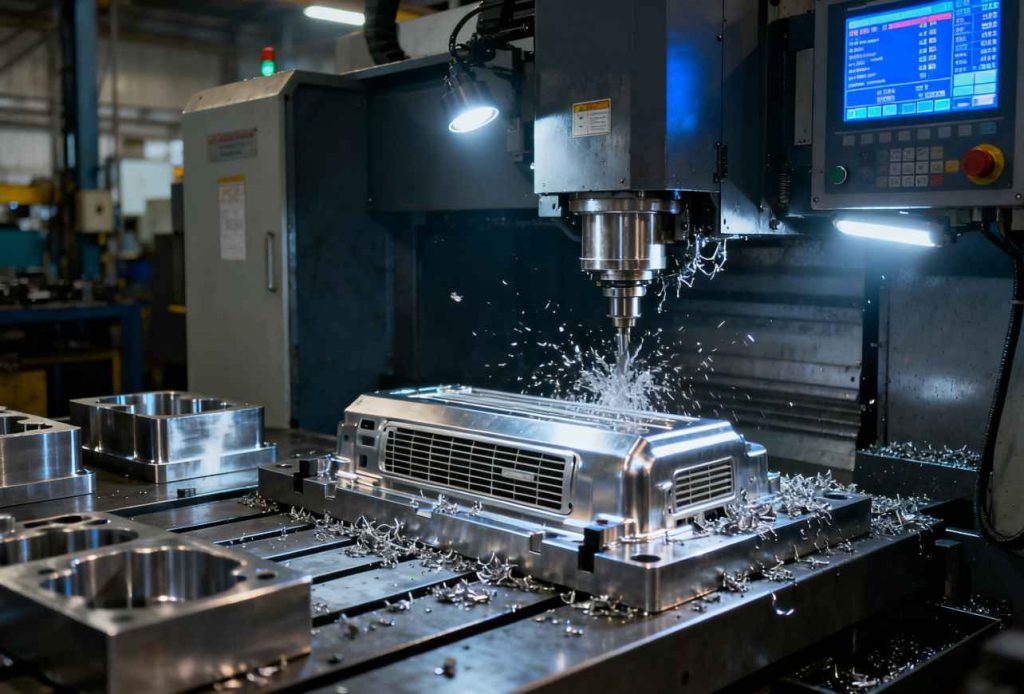
During the manufacturing of the air conditioning metal mold, we typically confirm the metal material with the client. Alloy steel is one of the most commonly used materials. BOOLING engineers use large-scale CNC machining centers to mill the mold cavity and core through roughing and finishing processes. Then, using EDM technology, we perform secondary machining on deep grooves, sharp corners, or complex textures that CNC tools cannot handle. Finally, we use wire cutting to precisely machine holes or inserts in the mold, achieving mold manufacturing with micron-level errors.
After completing the metal mold manufacturing, surface polishing is essential. Especially the smoothness of the air conditioning housing surface, which significantly impacts the overall product quality. We primarily use two methods for polishing the mold cavity: mirror polishing for high-gloss surfaces, and sandblasting or etching for matte surfaces to achieve the corresponding texture. To extend the lifespan of the metal mold, we typically apply surface treatments such as chrome plating or nitriding to increase the mold’s hardness, wear resistance, and corrosion resistance.
Before the formal delivery of the air conditioning housing mold, we conduct trial runs and debugging. First, our engineers install the completed mold into an injection molding machine for initial trial production. During the production of trial housing samples, we check for issues such as flash, shrinkage, short shots, or deformation. If any problems are discovered during testing, we repeatedly adjust the injection molding process parameters and modify the mold based on the samples until qualified products are produced.
BOOLING Injection Molding Process - The "Birth" of the Air Conditioning Housing
The choice of material is essential for the production of the air conditioning housing. Our engineers typically provide the optimal selection based on the product’s specific application, though clients can also choose according to their own needs. For example, air conditioning housings usually require granular plastics such as ABS resin, PS, or PP. Our primary choice is ABS resin material, because it offers high strength, impact resistance, good surface gloss, and ease of painting, making it a popular choice among many clients.
Before processing, we dry the plastic pellets. This is mainly because plastic pellets absorb moisture from the air, which could lead to defects like silver streaks or bubbles on the product surface. Therefore, we must eliminate potential issues at the very first step.
The power mechanism of the injection molding machine pushes the moving and fixed halves of the mold together tightly and locks them, completing the mold closing process. The screw inside the barrel rotates, conveying the plastic pellets forward. They melt and plasticize under the combined action of heaters and shear heat from the screw. Then, the screw advances, injecting the molten plastic into the sealed mold cavity under high pressure and speed. After injection, the screw maintains a certain holding pressure to supplement the plastic reduced by cooling shrinkage in the cavity. Simultaneously, cooling water circulates through the mold’s cooling channels, causing the plastic to cool and solidify rapidly. After cooling is complete, the air conditioning housing mold opens, and the ejection mechanism activates to push the molded housing part out of the mold. This completes the injection molding process for the air conditioning housing.
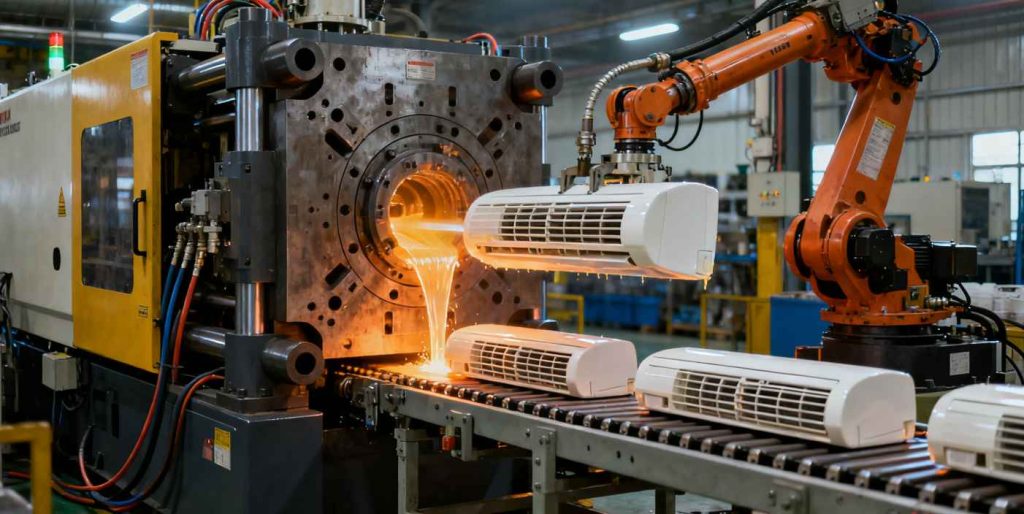
However, this is not the final step. Our fully automated system trims the gates connecting the housing to the injection system. Furthermore, both manual and automated systems provide dual assurance by conducting preliminary visual inspections of the newly produced parts to reject those with obvious defects.
Post-Processing and Assembly of the Air Conditioning Housing
The housing fresh out of the injection molding machine is just a “white blank.” The air conditioning housings we are familiar with usually have different colors, logos, and various components. Therefore, they need to undergo painting, hot stamping, and component assembly before the production of the final housing product is complete.
After obtaining the “white blanks,” BOOLING staff will determine the final color and any special surface treatments for the air conditioning housing based on client requirements. First, we clean the plastic housing, remove static electricity, and sometimes perform plasma treatment to enhance paint adhesion. Then, we apply a primer coat to the plastic housing, followed by a topcoat using the mixed color, providing the final color, gloss, and feel. After painting is complete, the housings are sent into a curing oven to bake at a specific temperature, ensuring the paint is thoroughly dried and cured.
After operators verify that the paint meets the expected standards, they use screen printing or hot stamping technology to apply the client’s brand logo, model number, indicator symbols, operational markings, etc., onto the housing. These are then passed to assembly personnel. Assemblers install components like the air deflector, display window, and filter mesh onto the front panel. After confirming that snaps, boss holes, and screw holes are intact and without defects, they pre-assemble components such as the indoor unit’s front panel, chassis, and top cover, preparing them for the final assembly line.
After product assembly is complete, dedicated personnel conduct a visual inspection of the air conditioning assembly. They ensure the product is free from any scratches, shrinkage, color differences, stains, printing errors, snap-fit assembly issues, or other flaws before it is sent to the workshop for packaging.
Home Appliance Mold Related Content
Applied’s expertise in modifying materials at atomic levels and on an ihdustrial scaleenables our customers to transform possibilities into reality.

